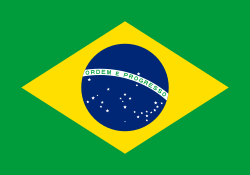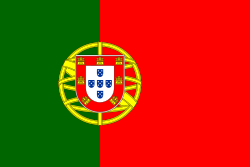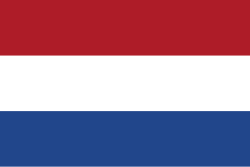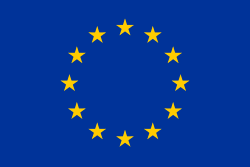Brasiliens Grand Prix 1985
| Datum | 7 april 1985 |
|---|---|
| Bana | Autodromo de Jacarepagua |
| Sträcka | 61 × 5,031 = 306,891 km |
| Vinnare | Alain Prost, McLaren-TAG |
| Pole position | Michele Alboreto, Ferrari |
| Snabbaste varv | Alain Prost, McLaren-TAG, 1:36,702 |
Brasiliens Grand Prix 1985 var det första av 16 lopp ingående i formel 1-VM 1985.
Resultat
- Alain Prost, McLaren-TAG, 9 poäng
- Michele Alboreto, Ferrari, 6
- Elio de Angelis, Lotus-Renault, 4
- Rene Arnoux, Ferrari, 3
- Patrick Tambay, Renault, 2
- Jacques Laffite, Ligier-Renault, 1
- Stefan "Lill-Lövis" Johansson, Tyrrell-Ford
- Martin Brundle, Tyrrell-Ford
- Philippe Alliot, RAM-Hart
- Derek Warwick, Renault
- Thierry Boutsen, Arrows-BMW
- Piercarlo Ghinzani, Osella-Alfa Romeo
- Manfred Winkelhock, RAM-Hart
Förare som bröt loppet
- Gerhard Berger, Arrows-BMW (varv 51, upphängning)
- Ayrton Senna, Lotus-Renault (48 , elsystem)
- Eddie Cheever, Alfa Romeo (42, motor)
- Pierluigi Martini, Minardi-Ford (41, motor)
- Niki Lauda, McLaren-TAG (27, bränslesystem)
- Andrea de Cesaris, Ligier-Renault (26, olycka)
- Riccardo Patrese, Alfa Romeo (20, punktering)
- Keke Rosberg, Williams-Honda (10, turbo)
- Francois Hesnault, Brabham-BMW (9, olycka)
- Nigel Mansell, Williams-Honda (8, avgassystem)
- Mauro Baldi, Spirit-Hart (7, turbo)
- Nelson Piquet, Brabham-BMW (2, transmission)
Noteringar
- Minardi gjorde F1-debut.
VM-ställning
Förarmästerskapet
| Konstruktörsmästerskapet
|
Källor
- ”1985 Formula 1 Brazilian Grand Prix” (på engelska). Formula1.com. https://www.formula1.com/en/results.html/1985/races/482/brazil/race-result.html. Läst 29 april 2015.
| ||||||||
| |||||
Media som används på denna webbplats
Flag of Portugal, created by Columbano Bordalo Pinheiro (1857–1929), officially adopted by Portuguese government in June 30th 1911 (in use since about November 1910). Color shades matching the RGB values officially reccomended here. (PMS values should be used for direct ink or textile; CMYK for 4-color offset printing on paper; this is an image for screen display, RGB should be used.)
The civil ensign and flag of Belgium. It is identical to Image:Flag of Belgium.svg except that it has a 2:3 ratio, instead of 13:15.
The Flag of Europe is the flag and emblem of the European Union (EU) and Council of Europe (CoE). It consists of a circle of 12 golden (yellow) stars on a blue background. It was created in 1955 by the CoE and adopted by the EU, then the European Communities, in the 1980s.
The CoE and EU are distinct in membership and nature. The CoE is a 47-member international organisation dealing with human rights and rule of law, while the EU is a quasi-federal union of 27 states focused on economic integration and political cooperation. Today, the flag is mostly associated with the latter.
It was the intention of the CoE that the flag should come to represent Europe as a whole, and since its adoption the membership of the CoE covers nearly the entire continent. This is why the EU adopted the same flag. The flag has been used to represent Europe in sporting events and as a pro-democracy banner outside the Union.Flag of South Africa, used between 1928 and 1982. It is identical to the 1982 to 1994 version except that the shade of blue is darker. It is also known as the "Oranje-Blanje-Blou".
















